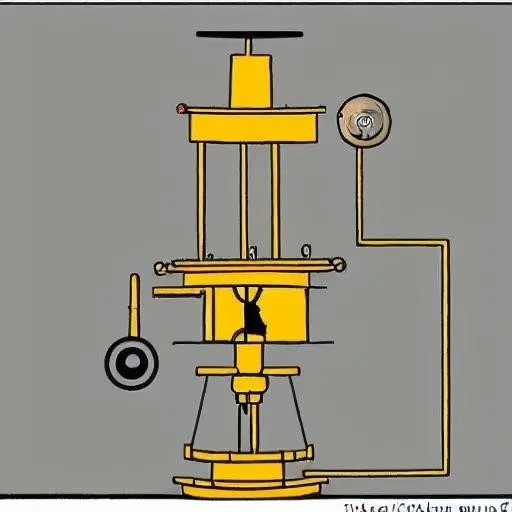In an era increasingly defined by environmental consciousness and the relentless pursuit of efficiency, modern automobiles are evolving at an unprecedented pace. Gone are the days when a car’s primary function was merely propulsion; today, drivers demand intelligence, sustainability, and tangible savings at the pump. Enter Econ Mode, a deceptively simple yet profoundly impactful feature that is quietly revolutionizing how we interact with our vehicles and the world around us. Far from just a button on the dashboard, it represents a sophisticated orchestration of automotive systems, meticulously designed to optimize every drop of fuel.
At its core, Econ Mode acts as your car’s benevolent financial advisor, subtly adjusting various operational parameters to prioritize fuel economy over raw performance. This intelligent intervention isn’t about sacrificing your driving experience; rather, it’s about refining it, making every journey more cost-effective and environmentally friendly. By recalibrating engine responses, transmission shift points, and even the air conditioning system, this innovative feature empowers drivers to achieve remarkable efficiencies without compromising the inherent reliability and safety of their vehicle. Understanding its intricate workings reveals a pathway not just to personal savings, but to a collective stride towards a greener automotive future.
| Key Information: Understanding Econ Mode | |
|---|---|
| Concept Definition | A vehicle operating mode specifically engineered to enhance fuel efficiency and minimize emissions by systematically modifying engine, transmission, and auxiliary system parameters for optimized consumption. |
| Primary Mechanisms |
|
| Core Benefits |
|
| Considerations |
|
| Typical Applications | Widely available across various vehicle types, including gasoline, hybrid, and even some diesel models, from manufacturers like Honda (Eco Assist), Toyota (Eco Mode), Ford (EcoMode), and many others. |
| Further Reading | Understanding Eco Mode in Cars ー AutoZone |
Delving deeper into its operational philosophy, Econ Mode is not a universal ‘one-size-fits-all’ solution but rather a finely tuned algorithm specific to each vehicle. Primarily, it remaps the electronic throttle control, dampening the accelerator pedal’s responsiveness. This means that even if a driver presses the pedal firmly, the engine management system interprets it as a more gentle input, thereby preventing sudden, fuel-guzzling bursts of acceleration. Simultaneously, the transmission control unit is instructed to engage higher gears earlier and hold them longer, keeping engine RPMs lower and consequently consuming less fuel. Furthermore, the often-overlooked air conditioning system, a significant energy drain, is managed more judiciously, moderating compressor cycles to maintain comfort without excessive power draw, exemplifying a truly integrated approach to efficiency.
The tangible benefits of consistently utilizing Econ Mode are undeniably compelling; Drivers frequently report a noticeable improvement in fuel economy, with some studies and owner experiences suggesting savings ranging from 5% to an impressive 15% under optimal driving conditions; Beyond the immediate financial relief, this translates directly into a reduced carbon footprint, contributing meaningfully to global sustainability efforts. Dr. Evelyn Reed, a renowned automotive engineer specializing in powertrain optimization, eloquently states, “Econ Mode represents a paradigm shift. It’s not just about slowing down; it’s about smartening up. Modern vehicles possess immense computational power, and features like Econ Mode leverage this to make driving inherently more efficient, transforming every commute into an act of environmental stewardship.” This expert endorsement underscores its profound value.
While the advantages are clear, some drivers harbor misconceptions, often equating Econ Mode with a sluggish or unresponsive driving experience. It’s crucial to understand that while acceleration might feel less aggressive, the vehicle’s fundamental power capabilities remain intact, merely accessible through a more measured input. Think of it like a seasoned marathon runner pacing themselves; they aren’t incapable of sprinting, but they choose to conserve energy for sustained performance. For situations demanding immediate power, such as merging onto a fast-moving highway or overtaking on a two-lane road, temporarily deactivating Econ Mode is always an option, giving drivers complete control over their vehicle’s dynamic capabilities. This flexibility ensures that efficiency never compromises safety or necessary performance.
Leading manufacturers have enthusiastically embraced and refined this concept. Honda’s “Eco Assist” system, for instance, provides real-time feedback through dashboard lights, guiding drivers towards more efficient habits, while Toyota’s “Eco Mode” is seamlessly integrated across its hybrid and conventional lineups, offering a refined, fuel-saving drive. Looking ahead, the evolution of Econ Mode promises even greater sophistication. By integrating insights from AI-driven predictive analytics and GPS data, future systems could dynamically adapt engine parameters based on upcoming road conditions, traffic patterns, and even driver preferences, pushing the boundaries of automotive efficiency far beyond current capabilities. Imagine a car that anticipates an uphill climb and pre-optimizes its power delivery, or one that learns your daily route and fine-tunes its settings accordingly – the possibilities are truly exhilarating.
From its humble beginnings as a simple efficiency toggle, Econ Mode has matured into an indispensable tool for conscious drivers and a testament to automotive innovation. It embodies a powerful synergy between technology and environmental responsibility, proving that performance and prudence can indeed coexist harmoniously. As fuel prices fluctuate and global sustainability targets become ever more pressing, embracing this intelligent feature is not merely a choice for personal savings; it is a proactive step towards a more efficient, cleaner, and ultimately, brighter future for transportation. Empowering millions to drive smarter, not just harder, Econ Mode is undeniably shaping the next generation of eco-conscious mobility.





